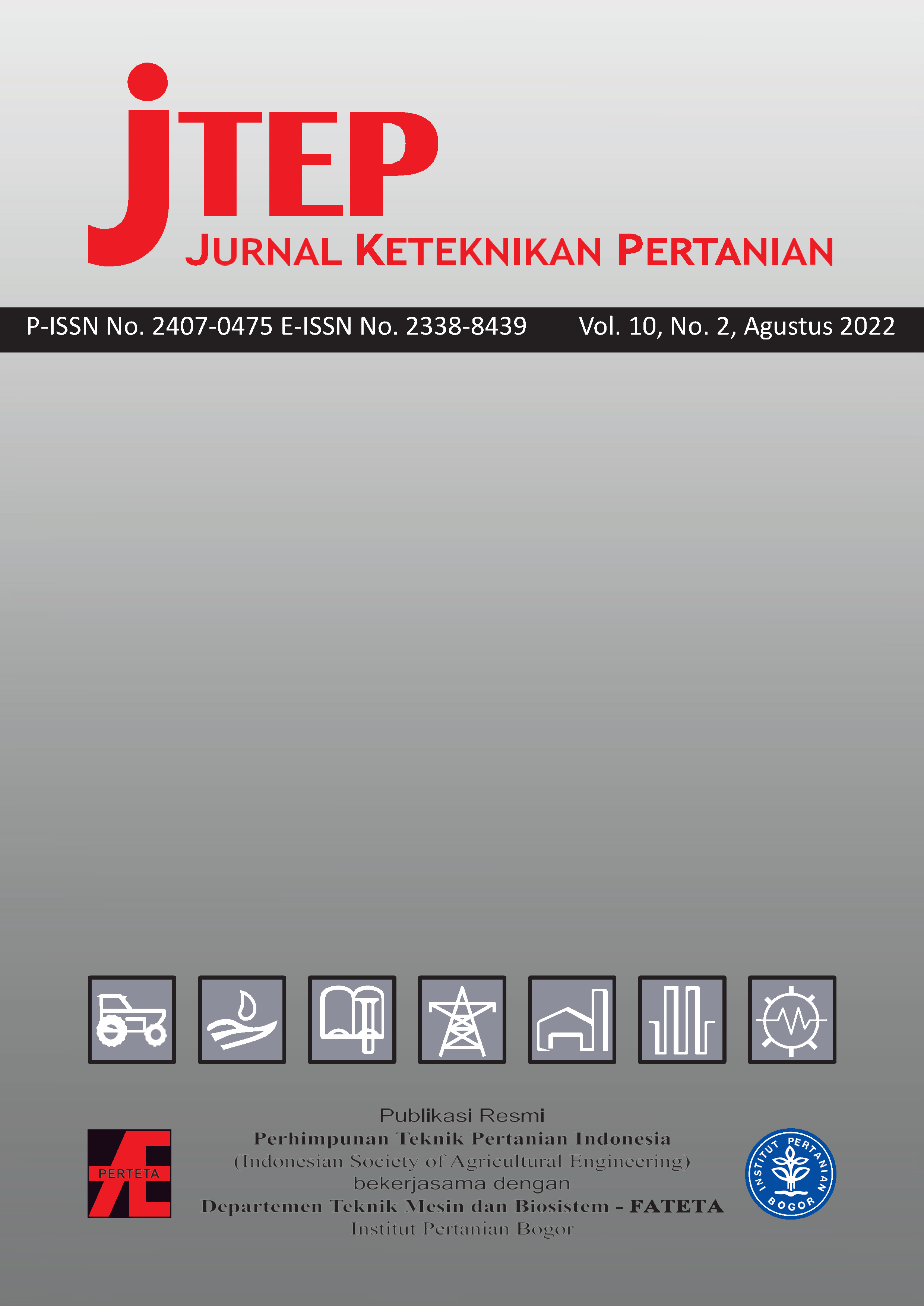Distribusi Spasial Dekat Waktu Nyata Draft Spesifik Pengolahan Tanah Perkebunan Tebu Belum Diolah Berbasis Citra SENTINEL-1
Abstract
Spatial variability is very important in the management of large-scale agriculture such as plantations. Information on the spatial variability of agricultural land is needed to ensure the effectiveness and efficiency of the operation of tillage machineries. This study proposes a model to determine the near-real-time and high-resolution spatial distribution of specific draft of tillage based on Sentinel-1A radar images. The research shows that the dynamics of spatial soil water content in near real time together with the fraction of silt and clay in the tillage layer affect the mechanical properties of the soil penetration resistance. The Dubois model has been applied to calculate the spatial soil water content based on Sentinel-1A. A mathematical model for calculating soil penetration resistance was developed from the proposed method using a multiple regression approach based on sample data collected from sugarcane plantations in the districts of Kediri and Sidoarjo, East Java, Indonesia. The performance of model has been calculated and shows good performance with RMSE, MAPE and accuracy values of 0.235, 18.32% and 81.68%, respectively. The spatial distribution of soil penetration resistance generated by the model becomes an important input in the calculation of the specific draft of tillage based on the Kisu approach. The distribution of the penetration resistance and the specific draft of tillage can be calculated and visualized using a spatial map. The distribution map of specific draft of tillage shows that the force per cross-sectional area of worked soil varies in the sugarcane plantation area. The future contribution of this research is to develop a decision support system in the selection of appropriate agricultural machinery for tillage operations in sugarcane plantations based on the principles of precision agriculture.
Authors

This work is licensed under a Creative Commons Attribution 4.0 International License.
Authors submitting manuscripts should understand and agree that copyright of manuscripts of the article shall be assigned/transferred to Jurnal Keteknikan Pertanian. This work is licensed under a Creative Commons Attribution-ShareAlike 4.0 International License (CC BY-SA) where Authors and Readers can copy and redistribute the material in any medium or format, as well as remix, transform, and build upon the material for any purpose, but they must give appropriate credit (cite to the article or content), provide a link to the license, and indicate if changes were made. If you remix, transform, or build upon the material, you must distribute your contributions under the same license as the original.

